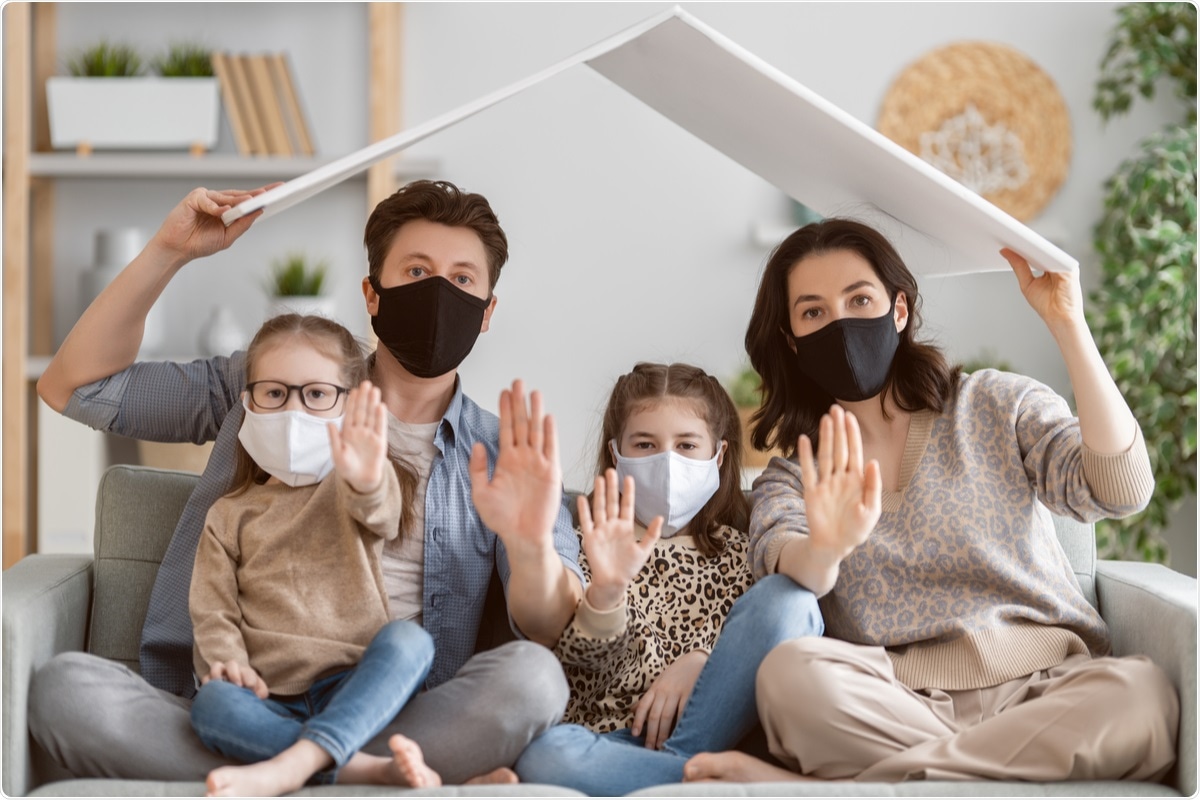Researchers examine the effectiveness of the Pfizer-BioNTech COVID-19 vaccine in reducing household transmission.

The ongoing coronavirus disease pandemic 2019 (COVID-19), which is caused by a novel betacoronavirus – namely the severe acute respiratory syndrome coronavirus 2 (SARS-CoV-2) – has led to immense disruptions to public health and economic wellbeing worldwide.
Scientists have developed COVID-19 vaccines at a record speed, and several of these have received emergency use approval (EUA) from the various global regulatory bodies. In many countries, vaccination programs have commenced, and researchers believe that fast global vaccination will be key to containing the pandemic.
Besides providing direct protection against the SARS-CoV-2 virus, vaccines may also offer indirect population-level benefits. If a vaccine prevents transmission of the virus from vaccinated yet infected individuals to those who are healthy and vulnerable to the disease, it can help to rapidly contain the ongoing pandemic.
 Study: Vaccination with BNT162b2 reduces transmission of SARS-CoV-2 to household contacts in Israel. Image Credit: Yuganov Konstantin / Shutterstock
Study: Vaccination with BNT162b2 reduces transmission of SARS-CoV-2 to household contacts in Israel. Image Credit: Yuganov Konstantin / Shutterstock
Can a vaccinated individual transmit COVID-19 disease to another person?
At present, very limited studies are available that show the effects of vaccination on SARS-CoV-2 transmission. In these limited studies, researchers have indicated a decrease in transmission in households and amongst vaccinated healthcare workers. Additionally, previous studies have also reported that vaccines may cause a reduction in the viral load in the upper respiratory tract of the COVID-19 patients, which subsequently reduces the chances of viral spread.
A recent study that included 550,000 households in England has revealed that both the ChAdOx1 nCoV-19 and BNT162b2 vaccines were able to decrease the transmission from a vaccinated and infected member of the household by 40-50% compared to unvaccinated cases. Another study that was conducted in Scotland and Finland has shown the reduction of transmission among household members of vaccinated individuals, when compared with unvaccinated healthcare workers.
Evaluation of the effect of vaccines on the transmission of the virus
Owing to the high rate of secondary infection among household members, scientists believe that study of the household is ideal for the evaluation of transmission of the virus and the effects of vaccination on the spread of the disease.
A new study has been published on the medRxiv* preprint server, which focuses on the effectiveness of the BNT162b2 vaccine by studying the susceptibility of a vaccinated individual to infection. The researchers have also studied the effect of the vaccine on virus transmission. In this study, the studied group received the BNT162b2 vaccine, i.e., Pfizer-BioNTech mRNA-based vaccine.
The data were obtained from Maccabi Healthcare Services (MHS), the second-largest healthcare organization in Israel. The data included demographics and other details of healthcare-related interactions. MHS is a nationwide, state-mandated, and non-profit organization in Israel that comprises a quarter of the Israeli population.
The authors of this study collected data for the period between June 15, 2020, and March 24, 2021. The data included information on 2,305,704 individuals from 1,275,015 households. The researchers observed that among this group, 1,276,311 individuals completed their vaccination, i.e., they received two doses of BNT162b2. In total, 8.3% of the individuals were infected with SARS-CoV-2, among which 4,141 were found to contract infections even after receiving both doses of the vaccine. The authors focused their analysis on households comprising at least one COVID-19 patient and two or more other household members.
To determine transmission rates, the scientists observed when a particular member within a household was infected and the duration of their infectiousness. They fitted two time-to-event data models, i.e., a mechanistic transmission model and a regression model, to estimate the vaccine’s effectiveness against a) susceptibility to infection and b) infectiousness.
These models estimated 80-88% vaccine effectiveness against susceptibility (VES), to COVID-19 infection, for the individuals who had received both doses of the vaccine. The vaccine’s effectiveness against infectiousness (VEI) was found to be 41.3%. Additionally, the overall vaccine effectiveness against transmission (VET) was found to be 88.5%.
Challenges faced while conducting this study
The authors outlined some of the difficulties they encountered while conducting this study, for example, a lack of vital information about the true number of infected household members and duration of infectiousness. In order to overcome this problem, they sampled from three delay distributions parameterized from earlier studies to govern the infection status of each individual through time.
Another difficulty was the misclassification of the dataset owing to the exclusion of candidates who were infected but did not receive the COVID-19 test. However, this did not have much of an impact on their analysis because the main objective of this study was to evaluate the reduction in the relative risk of transmission post-vaccination, and not to assess the risk of community transmission versus transmission via infected household members.
Conclusion
The study’s authors have shown the effectiveness ofthe Pfizer-BioNTech (orBNT162b2) vaccine in providing significant protection against the susceptibility to infection and reduction in the rate of transmission of COVID-19 infection among household members. Therefore, the results highlight the importance of rapid vaccination, of both high- and low-risk individuals, in protecting the population and potentially attaining herd immunity.
*Important Notice
medRxiv publishes preliminary scientific reports that are not peer-reviewed and, therefore, should not be regarded as conclusive, guide clinical practice/health-related behavior, or treated as established information.Journal reference:
Reference: https://www.news-medical.net/
